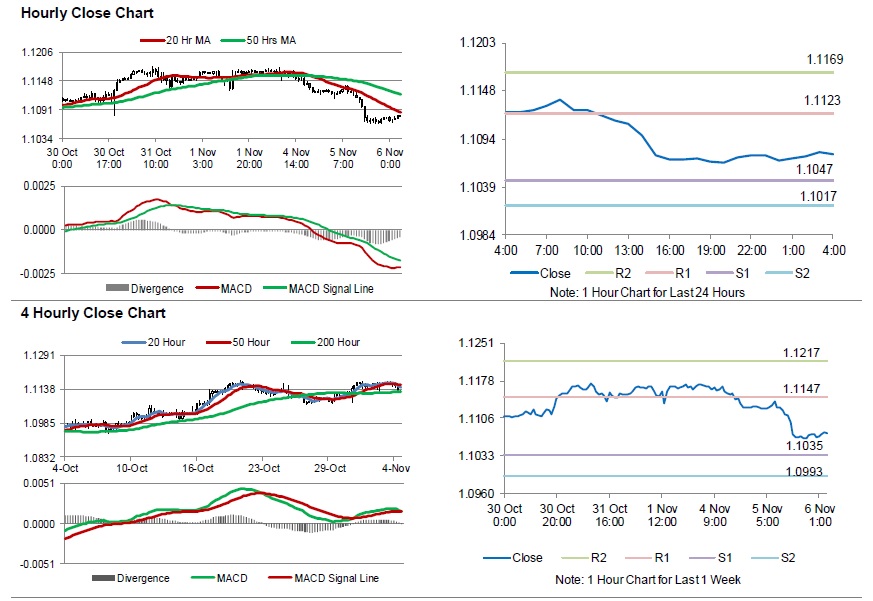For the 24 hours to 23:00 GMT, the EUR declined 0.46% against the USD and closed at 1.1075.
On the macro front, Euro-zone’s producer price index (PPI) dropped 1.2% on an annual basis in September, registering its biggest decline since September 2016 and in line with market expectations. In the prior month, the PPI had recorded a fall of 0.8%.
In the US, data showed that the ISM non-manufacturing PMI rose to a level of 54.7 in October, surpassing market anticipations for a rise to a level of 53.2. The PMI had registered a reading of 52.6 in the previous month. Also, the nation’s trade deficit narrowed to a 5-month low level of $52.5 billion in September, meeting market consensus. In the prior month, the nation had posted a revised deficit of $55.0 billion
Meanwhile, the US final Markit services PMI unexpectedly fell to a level of 50.6 in October, defying market consensus and preliminary figures for an advance to a level of 51.0. In the previous month, the PMI had recorded a level of 50.9. Further, the nation’s JOLTs job openings eased to an 18-month low level of 7024.0K in September, more than market expectations for a fall to a level of 7211.0K. In the prior month, the JOLTs job openings had recorded a revised level of 7301.0K.
In the Asian session, at GMT0400, the pair is trading at 1.1076, with the EUR trading a tad higher against the USD from yesterday’s close.
The pair is expected to find support at 1.1047, and a fall through could take it to the next support level of 1.1017. The pair is expected to find its first resistance at 1.1123, and a rise through could take it to the next resistance level of 1.1169.
Going forward, traders would await Euro-zone’s retail sales for September and Germany’s factory orders for September along with the Markit services PMI for October, set to release across the euro bloc. Later in the day, the US MBA mortgage applications, will keep traders on their toes.
The currency pair is trading below its 20 Hr and 50 Hr moving averages.

